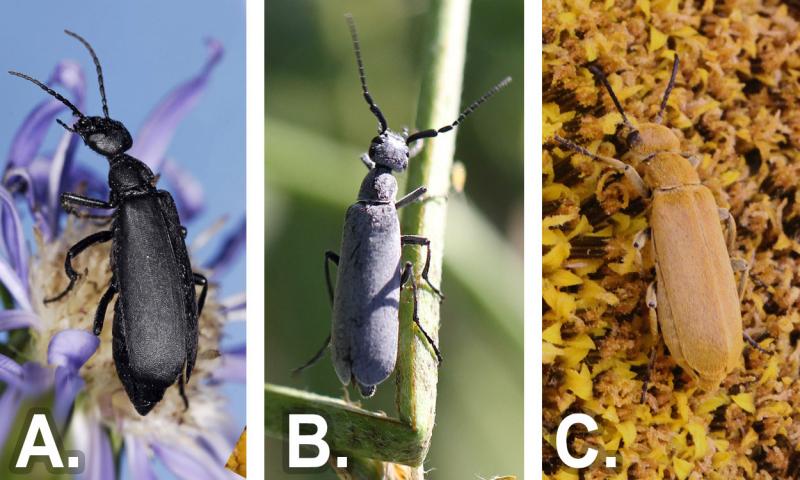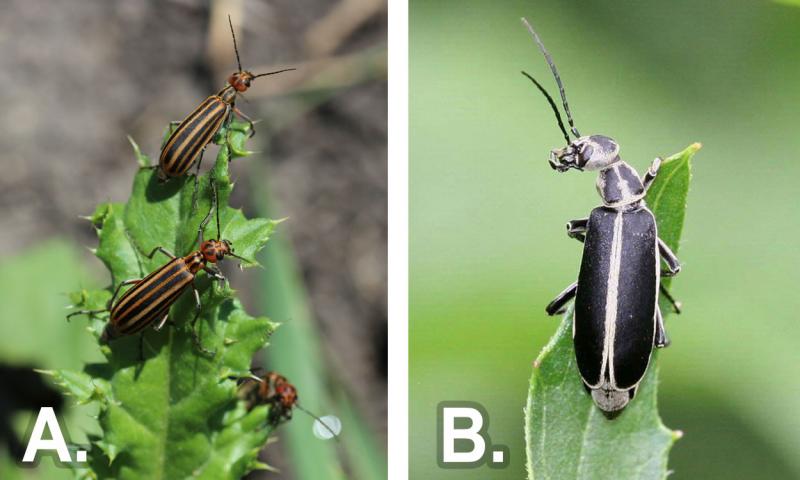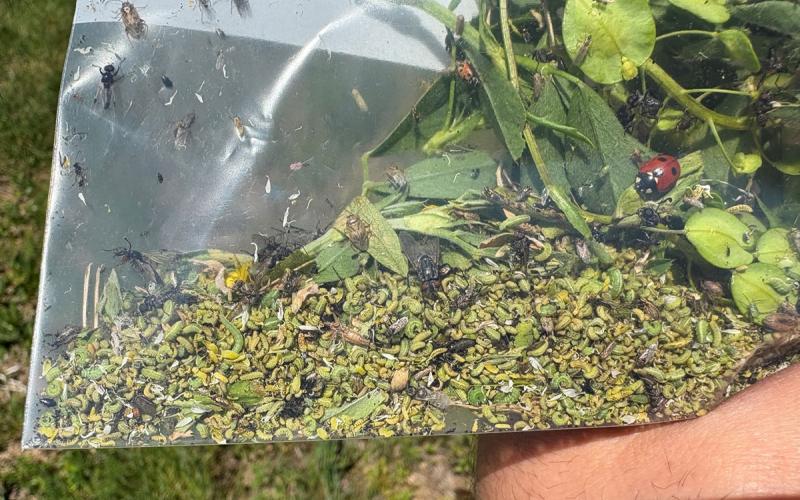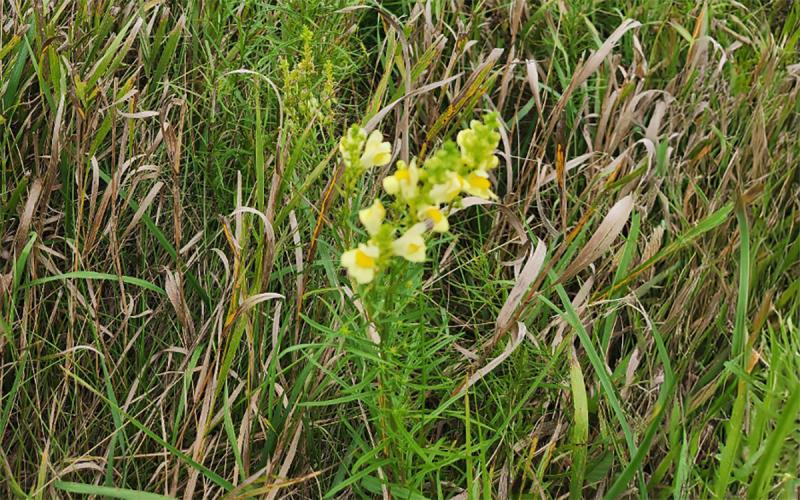Originally Submitted: July 6, 2021
Blister beetles are now active in South Dakota. Populations of blister beetles have been observed in many alfalfa fields in areas where large grasshopper populations were observed in 2020. Although the larvae of blister beetles can be beneficial by feeding on grasshopper eggs, the adults cause issues when large populations are present in alfalfa at the time of harvest. The reason is that blister beetles contain a toxic chemical called cantharidin. Therefore, hay that is heavily infested with blister beetles can become a health concern for livestock.
Profile

Adult blister beetles can be up to one inch long, have a soft, elongate body and vary in color and size based on species. The common species in South Dakota are the black, ashgray, immaculate, striped, and margined blister beetles (Figure 1 and Figure 2). Ashgray blister beetles have been the most-frequently reported so far this season. A unique characteristic of blister beetles is that their thorax (middle body segment) is narrower than both the head and abdomen. Furthermore, the abdomen of blister beetles sticks out past their hardened forewings when at rest.
Blister beetles get their name because their blood contains cantharidin, which causes blisters if it comes in contact with skin. They release this toxic chemical through reactive bleeding to defend themselves from predators. Cantharidin is also released if the beetles are crushed, which is a problem when feeding infested hay to livestock. If an animal ingests enough blister beetles, it can lead to sickness or even death. When scouting for blister beetles, avoid touching the beetles, as cantharidin will cause blistering on skin.
Management

It is important to scout alfalfa fields for blister beetles prior to each cutting. Second and later cuttings are at higher risk of infestation, because blister beetles are more abundant by early to mid-summer. Due to their predation on grasshopper eggs, blister beetles are more likely to be present in areas where large grasshopper populations were present the previous year.
Insecticide applications are not recommended, as this kills the beetles but does not remove them from the hay. Dead blister beetles are still toxic, and spraying may end up increasing the number of beetles per bale. One alternative is to cut alfalfa prior to peak bloom. This can reduce the number of blister beetles moving into the field, because they are attracted to the blossoms. Another technique is to allow the cut alfalfa to dry fully before raking. Blister beetles will not remain on cut alfalfa, so it’s important to give them time to vacate the plants before baling. The worst infestations are often located in field edges, so not feeding the bales produced from this hay can minimize livestock health concerns.
When selling hay, ensure that blister beetles aren’t present or notify the buyer of any infested bales. Horses have a particularly high sensitivity to cantharidin, so it is important that they don’t consume infested hay. Especially avoid feeding hay from field edges to horses.
The estimated lethal concentration for cantharidin is one milligram (mg) per 2.2 pounds for horses. Depending on the species, cantharidin concentrations per blister beetle adult range from less than one milligram to more than five milligrams per adult. Striped blister beetles have the highest cantharidin concentrations in South Dakota.


